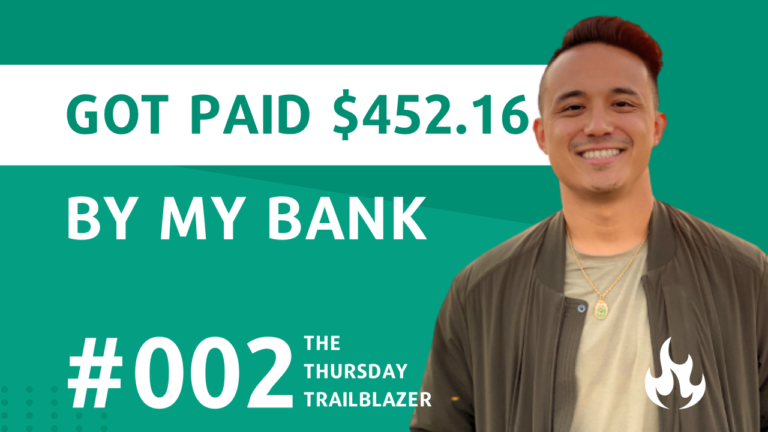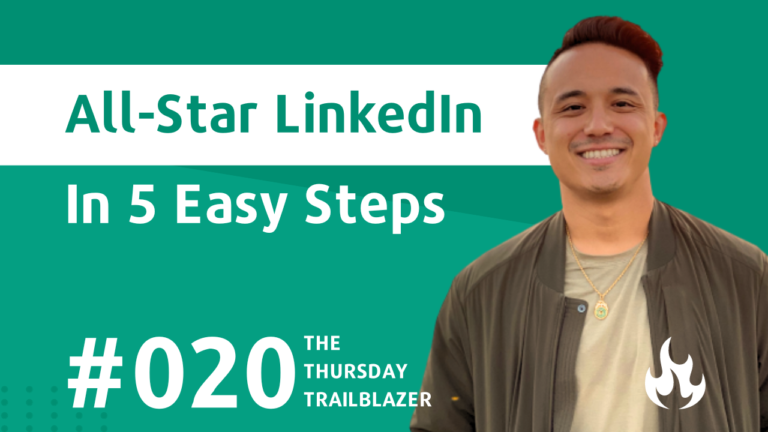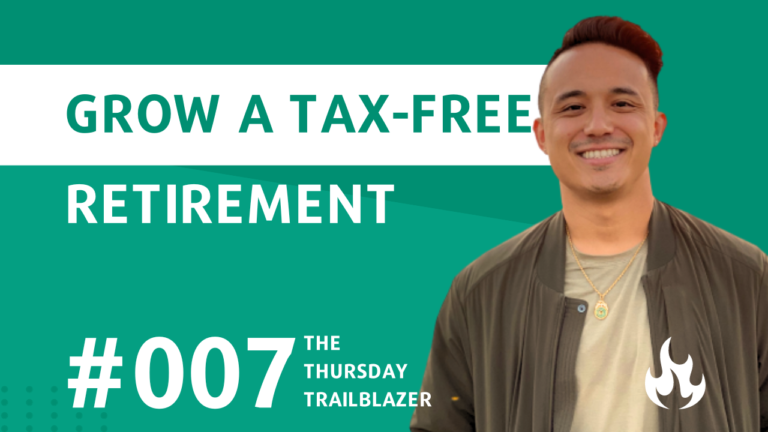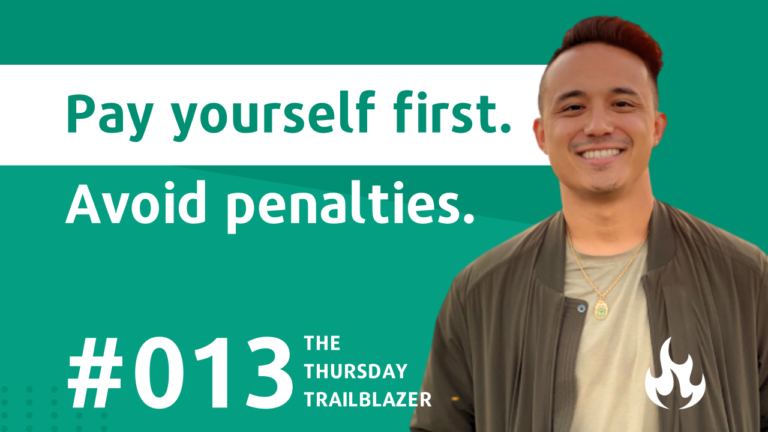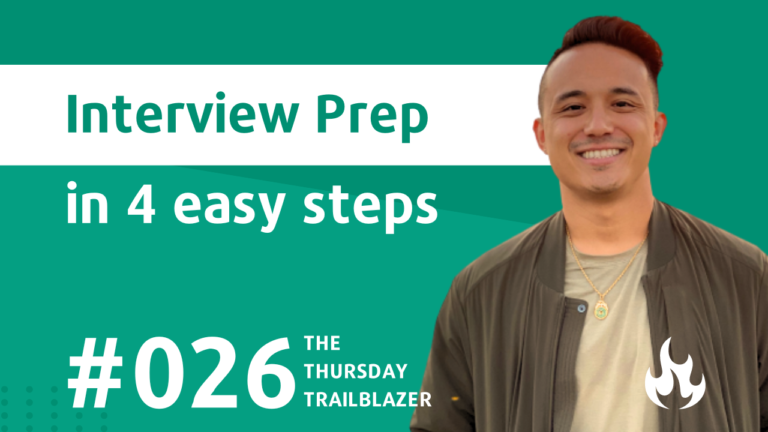T3 #018: 9 Things You Should Do When Looking for a Job 🗓️
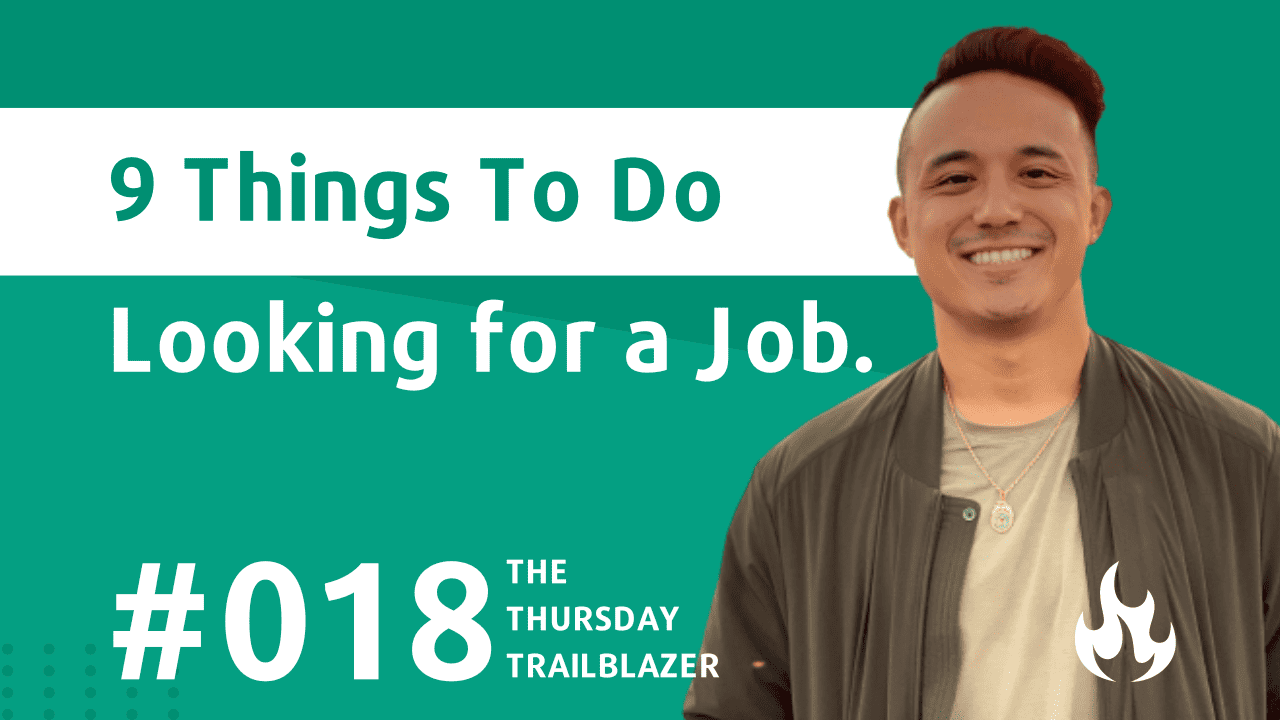
The Ultimate 5-step Guide How to Get Interviews and Job Offers (Step 1: Part III)
(This is a special series of my newsletter – the third in a series of posts sharing insights, tips, and actions that you can implement when you are searching for a job either to leave your current one, or due to a recent layoff. The principles in the following series can be largely applied to both situations and adapted to your specific scenario. Best of luck in your journey!)
Sponsored By
You’ve probably heard the old saying, “It’s a full-time job to get a job.”
But let me tell you a little secret:
It’s not just about clocking in hours –
it’s about what actions you focus on during your those hours.
So what do I mean?
The other day on LinkedIn I saw a post where someone said they were grinding 10-12 per day for the past two months…
…with barely any signal of success.
That is a huge investment of time, especially with minimal results.
And since we previously talked about how that can only lead to burnout, we won’t touch on that here.
But spoiler alert, you’ll get burnt out unless you do something different.
I personally live out of my Google Calendar, where I time-block what I do throughout most of the day.

One thing you’ll notice is that it was more than just looking for a job…
…and then applying for it.
Throughout my day there were a number activities that I focused on that helped me continue to expand my opportunities:
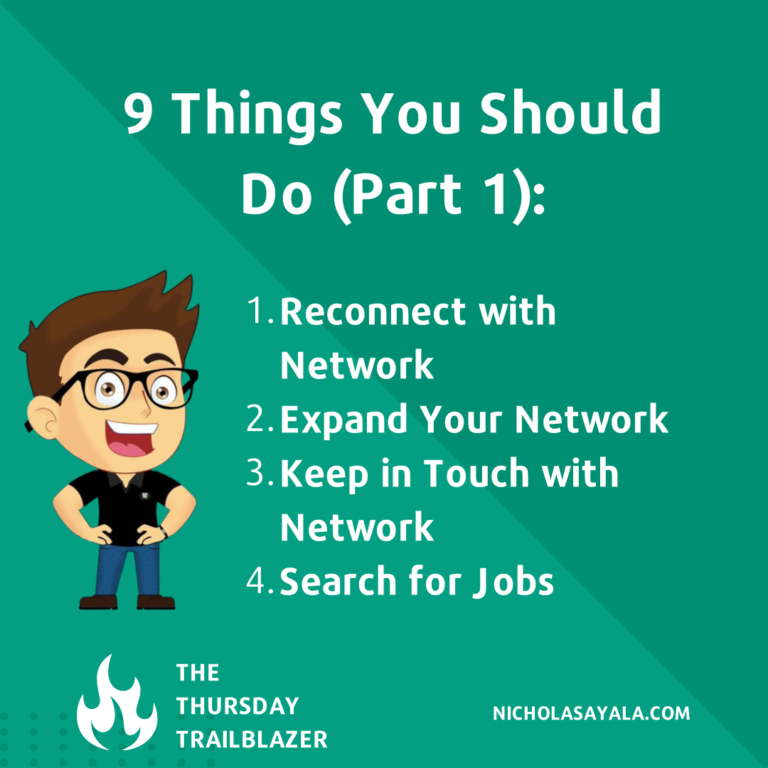
1. Reconnect with Your Network
Your network is your net worth.
A cliche saying that couldn’t be more true.
The world runs on human connection and relationships…
…and this will be one of the most important actions you can take to increase your chance of finding another opportunity.
Ideally, you aren’t contacting people for the first time during this phase…
…but you need to do what you need to do.
I found that honesty is the best policy when reaching out to connect.
I literally would start the message letting them know of my situation.
I personally find it annoying when someone reached out and it cryptic in why.
So I try my best to not do that.
Reconnecting with old colleagues, mentors, and professional acquaintances can open doors to opportunities that aren’t advertised publicly.
Action Steps:
- Make a list of at least ten former colleagues, mentors, or industry acquaintances.
- Craft a personalized message that is short and concise. No one wants to receive an essay (that is more work for them).
- Sample structure: [Greeting] + [Hope things are well] + [State current situation] + [You ask: Call, etc.]
- Set a goal to reconnect with at least two people per week. (Modify this goal to what you see fit)
2. Expand Your Network
If your network is your net worth…
…then growing your network is the investment well worth your time and energy.
After reaching out to some of my old colleagues and mentors – I was blown away with how open they were to introduce me to others in their networks.
I moved from the San Francisco Bay Area to the Greater Seattle area around two years ago…
…so most of my in-person network was left behind.
That became a focus area for me when I was looking to expand my network.
I would ask my current network if they knew anyone in the technology industry (that’s the industry I work in) in the Seattle area and if they were open to introduce me to.
Not for a job – but simply to meet another person in the area and get a better understanding of what is common in the area.
For example: In the San Francisco Bay Area, I could go to Meetup(dot)com and find some local events to attend depending on my interests.
Those sort of events are not as popular here.
But what I did learn is that there are a number of venture capital firms and professional networks that do host them.
Being referred to those from others already involved saved me a ton of time to find out that on my own.
Action Steps:
- Research at least two networking events that you can attend in-person. You can discover local events on websites like Meetup.com or Eventbrite.
- Tip: When you are reconnecting with your network, don’t be afraid to ask if they might know someone in an industry, profession, or location that you’re interested in learning more about. Actively participate in these groups. Share your insights, ask questions, and engage in discussions.
3. Keep In Touch with Your Network
Everyone is busy with their own lives…
…but you would be amazed how far a small comment on someone’s recent post or a quick check-in text message can go.
Depending on the depth of the relationship, keeping up with others on social platforms can end up leading to a conversation where you catch up on each other’s lives.
There was someone that I hadn’t spoken to for over 12 years…
…one comment on a recent venture they were working on led to weekly check-ins and rekindled our relationship!
Remember that relationships are longterm investments.
They are more than transactional.
When you are reaching out to people, put yourself in their shoes.
If you were them – would you want to help?
If not – why?
That is the area to focus on and improve with the relationship.
Action Steps:
- Regularly engage with your network. Comment on their LinkedIn posts, share relevant articles, and congratulate them on their professional milestones.
- Schedule informal catch-ups like virtual coffee dates or quick check-in calls at least once a month. If someone is making an introduction to someone on your behalf – send a $10 DoorDash gift card over email before the meeting with a quick note “For coffee.”
- Be a giver, not just a taker. Offer help, advice, or resources when you can.
4. Search for Jobs
At the core this is going to be one of the main activities you are going to be focused on.
Finding roles that you align with your skills, expertise, and career aspirations are going to be at the forefront of how you evaluate opportunities.
But there are a few other things that most people forget.
One of the first things I look for is when was the job posted.
This matters for a few reasons.
If it was posted more than a month ago, especially in the current economy, it’s probably received hundreds of applications…
…and is already evaluating candidates beyond the first round.
I’m not saying that you shouldn’t put your name in the hat – but realize that there might less of a chance of someone seeing it.
I personally look for any jobs posted less than two weeks.
Action Steps:
- Dedicate a specific time each day for job searching, but keep it to a manageable duration, like 1-2 hours, to maintain focus.
- Use advanced job search filters on platforms like LinkedIn and Indeed to find roles that closely match your profile.
- Keep a log of jobs you’re interested in, noting why you’re a good fit for each. I tried a few options but found Teal’s Job Application Tracker was easiest to track job descriptions, salaries, and interview notes.
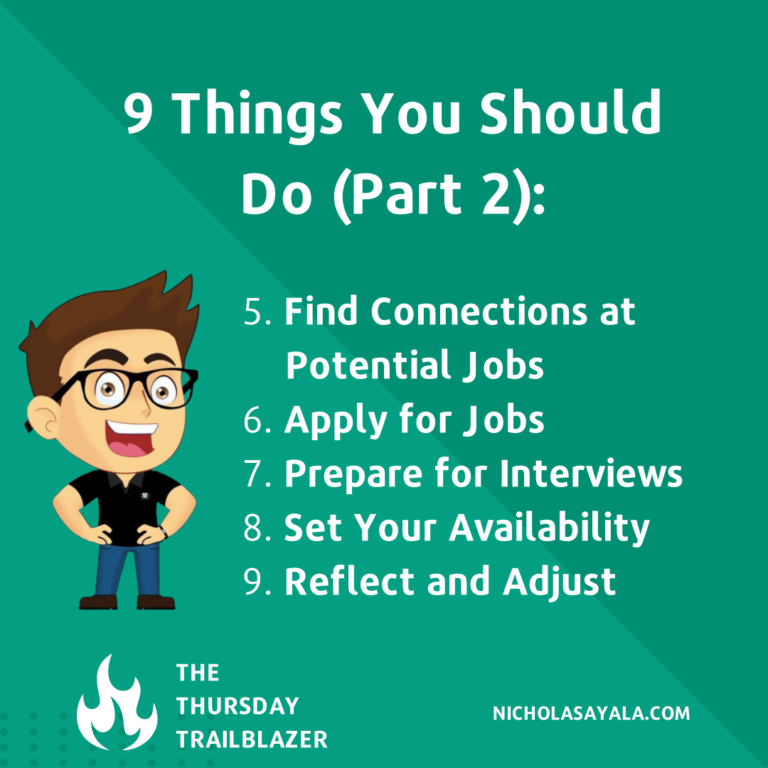
5. Find Connections at Potential Jobs
Alright, the past couple of activities are focused on reconnecting, expanding, and maintaining your network…
…now it’s time to be VERY intentional with who to include in your expanded network.
The results of this activity are going to be a little less driven my longstanding relationships…
…and more so transactional.
What do I mean by that?
After finding a job that you are interested in applying for – you need to find someone at that company that can bring your application to the top of the stack.
What is the top of the stack?
A referral.
Now this isn’t the case for all companies…
…but many have a identifier within their job tracking software for people that are referred by current employees.
Depending on how you go about this step will determine the level of information and connection you’ll be to get.
This can range from a simple “Sure, I’ll refer you” to a one-off call where they will go step-by-step in giving you the inside scoop on the company, culture, and hiring process.
Action Steps:
- For each job you’re interested in, use LinkedIn to find any first or second-degree connections at the company.
- Find things that are in common with the person such as the same school, extracurriculars, groups, or organizations.
- Determine that you are looking for when you reach out:
- Information interviews: Prepare specific questions about the company culture, the role, and any advice they might have for a prospective applicant.
- A referral: Prepare a brief introduction of yourself and why you think a you would be a good person for the role. Finding something to also mention that you have in common is helpful to break the ice!
6. Apply for Jobs
While applying for jobs is the most obvious part of your search…
…it should be the result coming from the previous steps.
Not the first thing you do.
It can be time consuming filling out job application after job application…
…especially when you are just repeating the information that was already included in your resume upload.
(I’m looking at you Workday 👀)
So you want to make sure when you are filling this out, your effort doesn’t end up going nowhere.
In the best case scenario, when you are spending time at this stage…
…it’s because someone has already referred you and this is one of the final steps to complete that step.
If you don’t have referral, make sure you are applying on the platform that is most likely going to catch the recruiter’s attention.
For example: If I was applying to an early-stage startup that went through Y-Combinator…
…I would go to apply through workatastartup.com before I apply directly through their jobs page.
Action Steps:
- Aim to send out a focused number of applications each week, prioritizing quality and fit over quantity.
- Customize your resume and cover letter for each job, clearly articulating why you’re the ideal candidate.
- I usually create a standard template for my cover letters that allows me to replace company-specific details so it’s tailored to the company but avoid the need to create a new one from scratch.
7. Prepare for Interviews
Do not start to prep for an interview until you have received a callback.
Yeah, I said it – do not even waste your time.
There are going to be a large amount of applications that you submit, even with a referral, that you will never hear from.
There are other ways to prepare for an interview like knowing what past projects and scenarios you are going to bring up during an interview…
…but any of the company-specific stuff is going to come afterwards.
But what do you do after a recruiter has reached out?
Now it’s time to prep for that initial phone screen or interview.
If you’re keeping up with using Teal’s Job Application Tracker, you can store all of your company and interviewer specific notes within their system.
I found it super easy to take notes, and find it quickly when I’m on the call.
Action Steps:
- Research each company you’ve applied to:
- Why this company?
- Why this position?
- Why do you think you’re a good fit for this role?
- Research any recent news or announcements about the company. It’s helpful to know any current events that will impact the position, especially if the recruiter mentions it.
- Develop a list of common interview questions about the company or the person your are speaking with. Some of my go-to questions:
- How does the team measure success for someone in this role in the next 3- or 6- months?
- Is this role being filled because the team is expanding? (assumes a best case scenario and opens the conversation if someone previously left the role or not)
- What are some things about this company or team that made the role interesting for you to join?
- Conduct mock interviews with a friend or mentor to get feedback and improve your delivery. The less they know about what you do the better. You are aiming to communicate your thoughts without any confusing words or concepts.
8. Availability for Calls, Interviews, and Meetings
At what time of the day are you at your best?
I tend to wake up early, but I am aware that it also takes some time before I am at my “100%.”
The worst thing that I could do to myself is schedule an early meeting – self inflecting a disadvantage to myself.
As you saw in the screenshot of my calendar earlier, I set aside call blocks between 11:00AM to 2:00PM.
This the the same time block that I would send to a recruiter requesting my availability.
I avoid giving them a full day of availability…
…because I also have other important things that I need to do.
It’s late enough in the morning where I can eat breakfast, get ready, and review my interview notes without feeling rushed…
…but not too late where if I had to meet with someone in a later time zone that it would be unfeasible.
If I don’t have any interview calls scheduled…
…I also use this time block for any new or reconnection calls with people in my network.
Action Steps:
- Identify what time of the day you best perform when engaging with others
- Set this time aside on your calendar and stick to it – the last place you want to be is with a day scheduled with random calls throughout the day where you can’t do anything productive in between.
9. Reflect and Adjust
Good ol’ Albert Einstein said it the best,
“Insanity is doing the same thing over and over again and expecting different results.”
That is why at the end of every week it’s important to look back and reflect on your job search activities.
What’s working?
What’s not?
Should I rearrange the order that I am doing something?
At the beginning of my search, I was spending more time updating my resume and LinkedIn profile.
Towards to end I was spending more time researching for upcoming interviews.
Modify you calendar to optimize for the activity that is the most impactful.
Action Steps:
- Set aside at least 30-minutes each week to review your job search activities and outcomes.
- Identify areas for improvement – for example have someone you professionally respect take a look at your resume.
- Celebrate small victories, like a successful networking conversation or a well-received application. You are making progress!
💡 Action Steps
🗓️ Create your routine (30 mins). Whether you use a handwritten journal or Google Calendar, spend some time to outline which activities you are going to focus on and when. Optimize your time to receive as many referral-based job applications. I’ve put together a free resource, the Focused Routine Kit, that you can use to create your weekly routine.
📝 Create a Job Application Tracker (2 mins). You can create your own spreadsheet, use a pen & paper, or do what I did and use Teal’s Free Job Application Tracker. Note: I only promote brands and products I know and trust – and as a Teal affiliate, I may earn a commission (at no cost to you) if you sign up with my link.
Remember, it’s not about tirelessly applying to every job posting you see.
It’s about strategic actions that move you closer to your dream job.
Each step you take is a building block towards your success.
You have the system, now you need to trust the system you have in place…
…and do the work!
So, go ahead, craft that routine, and watch as your job search transforms from a daunting task to an exciting journey.
In next week’s article, I’ll cover how you can Revise your resume to be in the top 10% 📝 where I’ll discuss how your write your experience, and the format you use, will set you apart the from other applicants.
🚨 Spoiler alert: It is not by including a photo of yourself on your resume.
📚 Other Notable Resources
- Last Week’s Post: It’s a marathon, not a sprint 👟 (Step 1: Part II)
- Free Resource: Personal Budgeting Template (works for couples too!)
- Free Resource: Focused Routine Kit
- Next Week’s Post: Top 3 Tips For Making a Great Resume
Learn the tactics we should have learned in school without the trail-and-error.
Join me and 67+ subscribers to The Thursday Trailblazer. Every Thursday morning, you’ll receive 1 step-by-step insight to help you level up in the areas of personal finance or career development.


